This Easy Grilled Salmon in Foil is seasoned to perfection using a handful of spices and transforms a simple fish fillet into a tender and flavorful main dish. This foolproof approach is effortless, ensuring moist and perfectly cooked results every time.
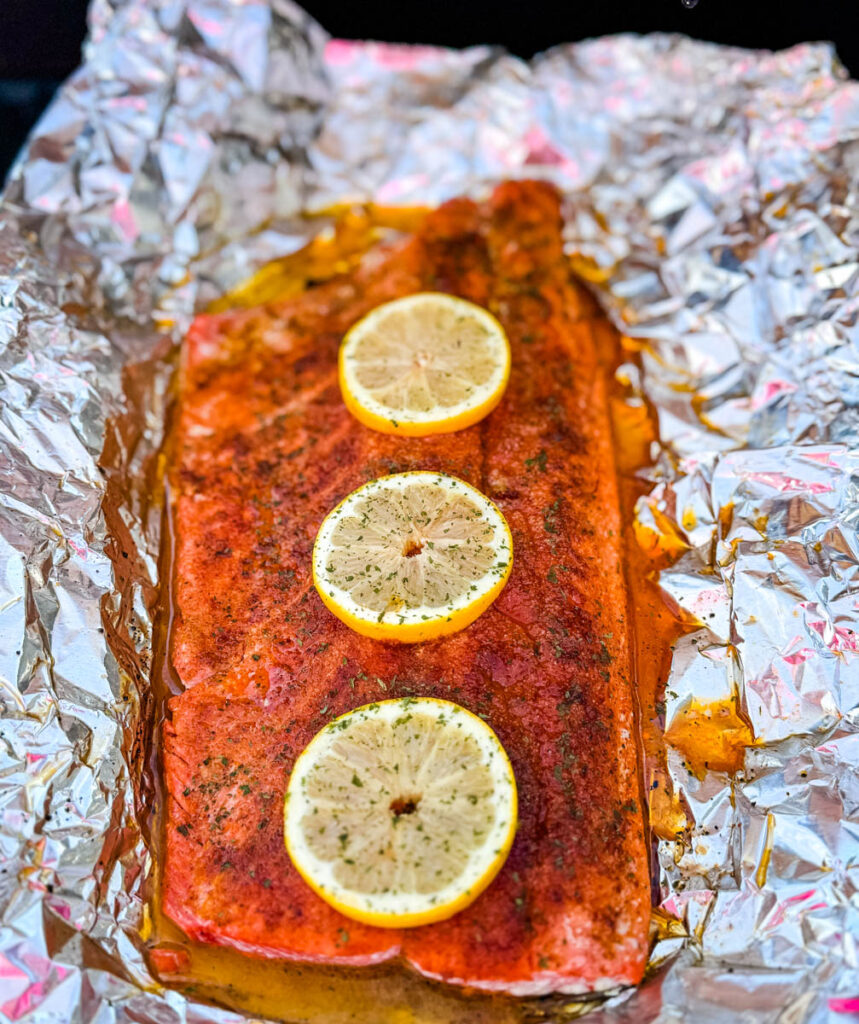
This post contains affiliate links. Please read my full disclosure here.
Why You Will Love This Recipe
- Moisture Retention: Foil creates a sealed cooking environment that helps retain moisture during the grilling process. This is super important for salmon, as it can dry out quickly if overcooked.
- Even Cooking: Foil helps distribute heat evenly around the salmon fillet, promoting uniform cooking.
- Foil Prevents Flare-Ups: The foil acts as a barrier between the salmon and the open flame, reducing the risk of flare-ups. This is important for preventing the fish from overly charring.
- More Flavor: The packets allow the fish to cook in its own juices along with any added herbs, spices, or marinades. This fish absorbs these flavors, resulting in a more flavorful end product.
- Easy Cleanup: Grilling salmon in foil minimizes cleanup. There’s no need to worry about the fish sticking to the grill grates, and the foil can be disposed of, leaving behind a clean grilling surface.
- Easy to Customize: You can use various seasonings, herbs, vegetables, or even citrus slices inside the foil packet, allowing for different flavor profiles.
- Reduced Risk of Overcooking: The foil acts as a protective barrier, reducing the risk of overcooking the salmon. It shields the fish from direct heat, helping to maintain its delicate texture without becoming dry or tough.
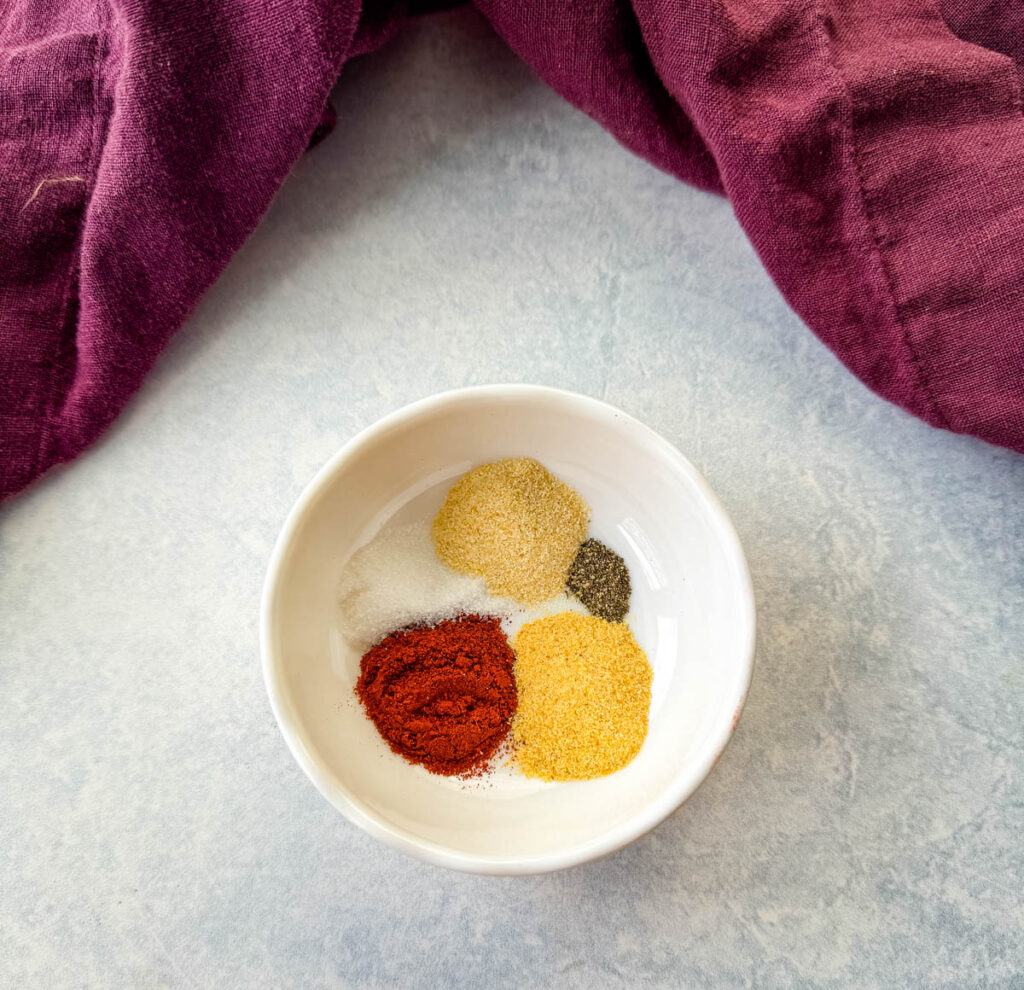
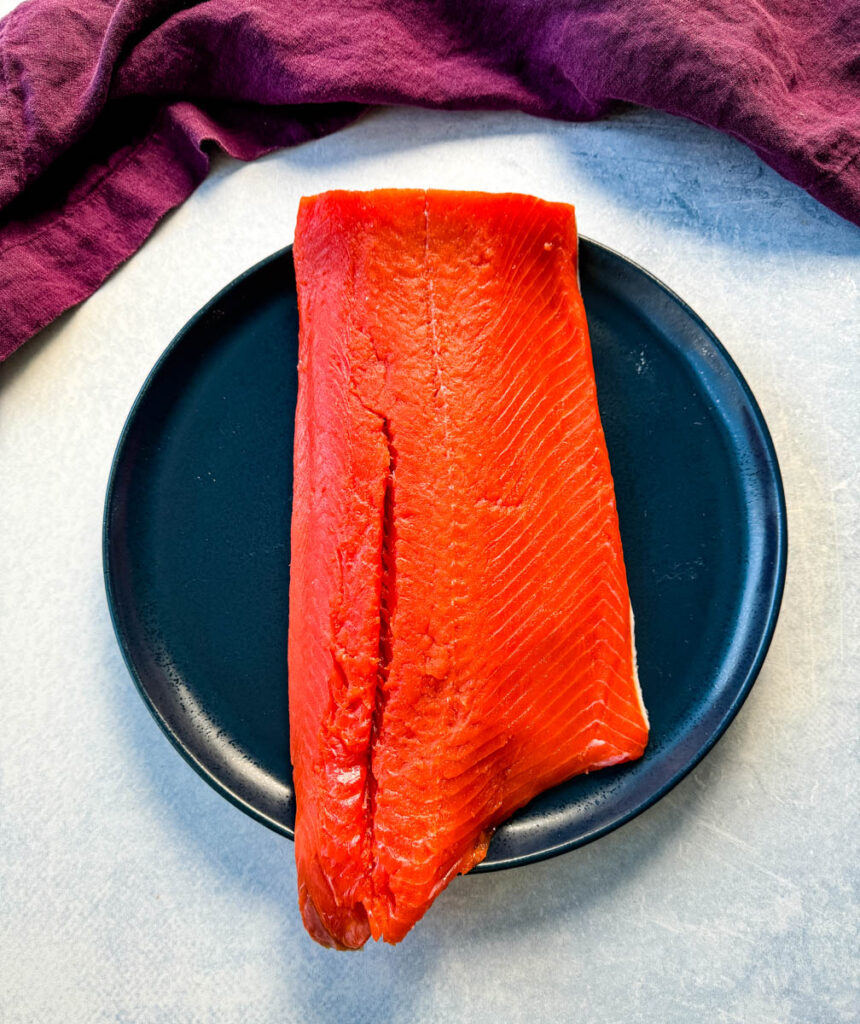
Why Use Foil
The foil acts as a barrier between the salmon and the open flame, reducing the risk of flare-ups. This is important for preventing the fish from charring or developing an overly smoky flavor. This method also helps retain moisture to avoid dry fish.
And clean-up is a breeze! No need to scrub those grill grates.
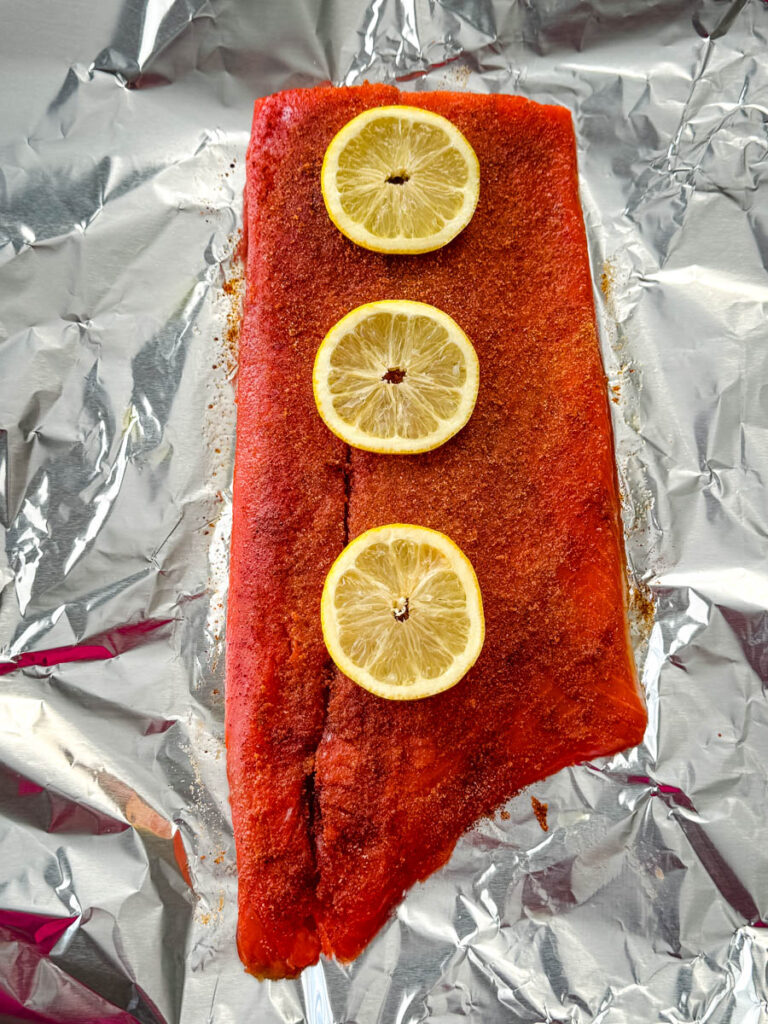
How to Make Grilled Salmon in Foil
Full detailed instructions are below in the recipe card.
- Place the fish on a piece of foil (large enough to cover and seal the fish). Rub both sides of the fish with olive oil and sprinkle the spices onto both sides of the fish.
- Seal the foil around the fish.
- Grill.
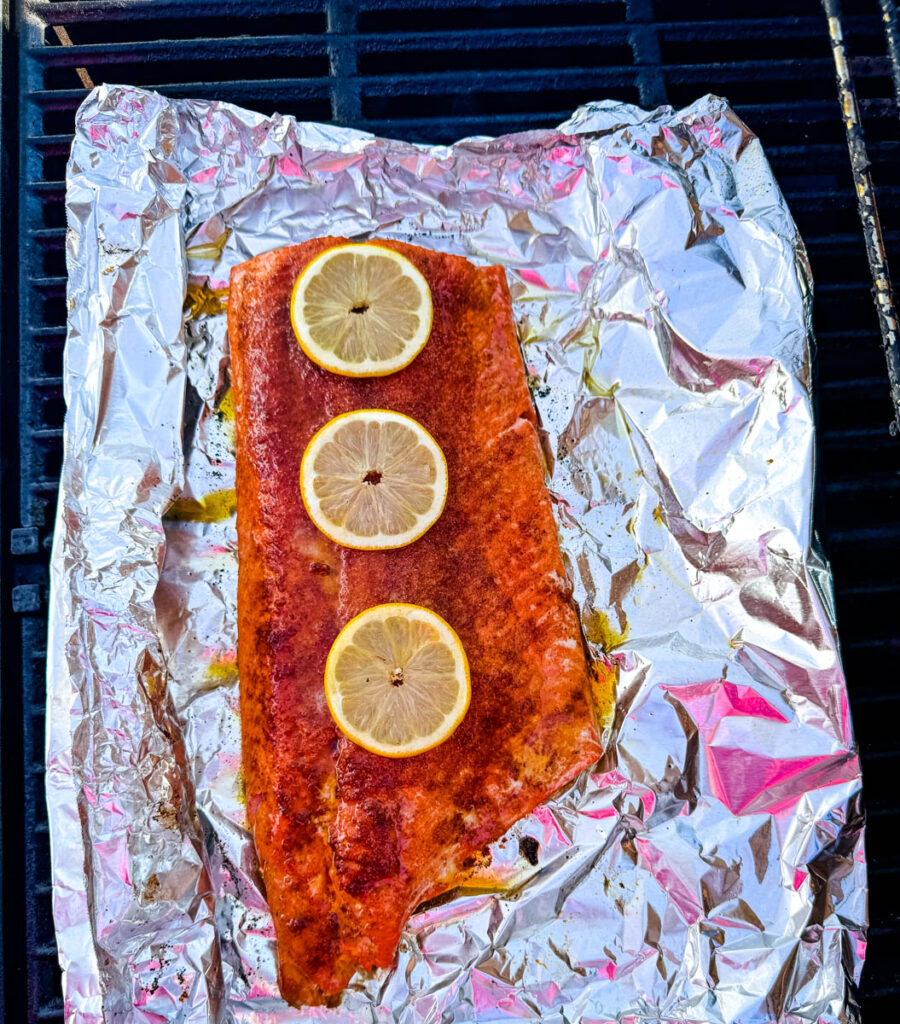
Grill Temperature
Aim for a medium-high heat setting on your grill, which is around 375 to 400 degrees. This temperature range allows for thorough cooking without drying out the salmon.
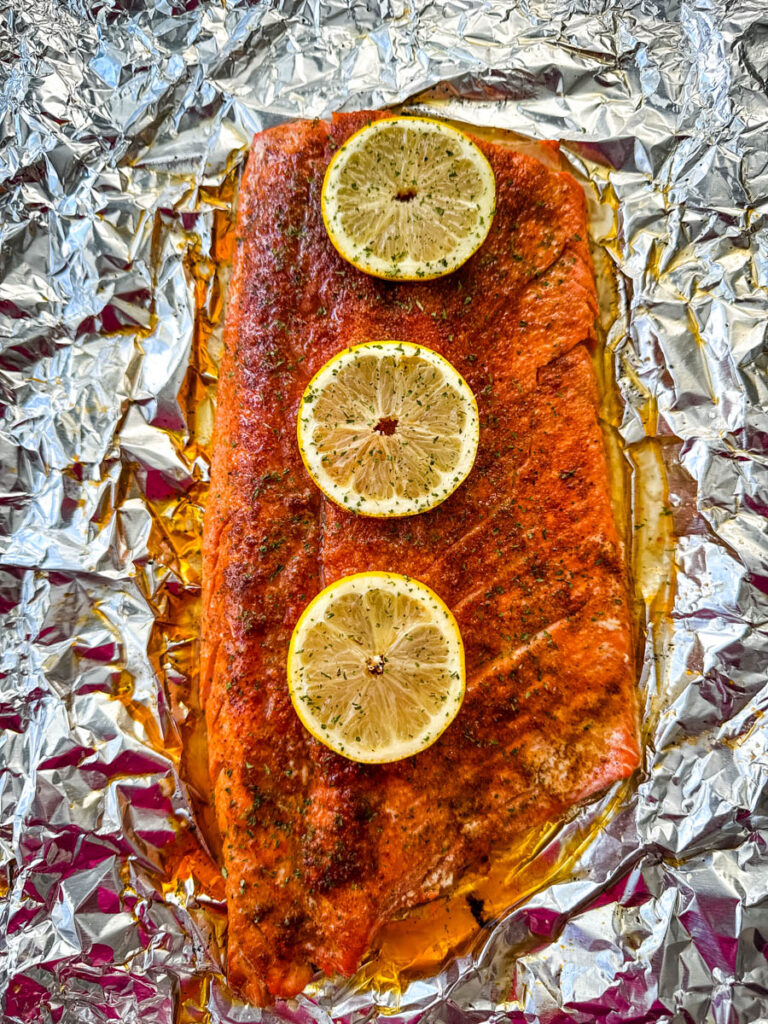
How to Tell When Salmon Has Finished Cooking
- Temperature: Use a meat thermometer and ensure the fish has reached an internal temperature of 145 degrees. Check the temperature in the thickest part of the fish.
- Appearance and Touch: Perfectly cooked salmon will have a light pink color and will be opaque throughout. The flesh will also start to flake when pressed with a fork.
- It’s important to note that salmon can be cooked to varying degrees of doneness, some people prefer it cooked through while others prefer it medium-rare at 135 degrees. Decide what works for you.
How to Store Leftovers
Store the salmon tightly covered in the fridge for 3-4 days.
Freezer Tips
Leftovers can be frozen tightly sealed for up to 2 months. Defrost overnight in the fridge.
How to Reheat
I recommend you use the air fryer or oven. If using the oven, place the salmon on a baking sheet lined with parchment paper. Cover the salmon with foil and place it in the oven at 275 degrees until warm.
If using the air fryer, reheat it at 200 degrees for 5-7 minutes or until warm.
If you use the microwave, be swift! Don’t leave it in too long. It will dry out the fish.
Pair With These Recipes
Smoked Baked Beans with Bacon
Southern Coleslaw
Potato Salad with Bacon
Grilled Asparagus in Foil
More Salmon Recipes
Salmon Rice Bowl
Easy Salmon Bites
Cajun Salmon
Air Fryer Salmon (15 Minute Recipe)
Maple Glazed Salmon
Cedar Plank Grilled Salmon
Smoked Salmon Eggs Benedict
Salmon Fried Rice with Vegetables
Drizzle this in our Creamy Dill Sauce for Salmon.
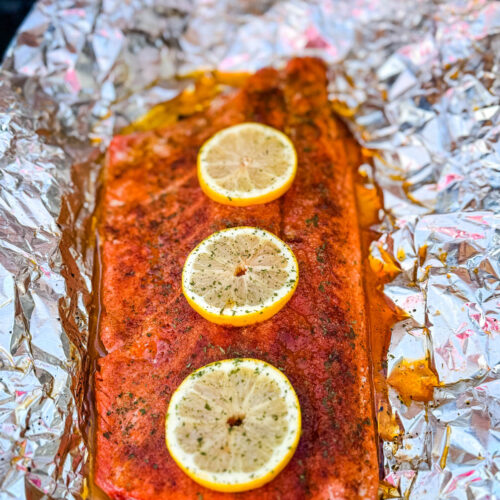
Grilled Salmon in Foil
Ingredients
- 1-1 1/2 pounds raw salmon
- 1/2 tablespoon olive oil
- 1/2 teaspoon smoked paprika Regular paprika is fine.
- 1/2 teaspoon garlic powder
- 1/2 teaspoon onion powder
- Salt and pepper to taste
- foil
Instructions
- Preheat grill to medium-high heat, 375 degrees.
- Place the fish on a piece of foil (large enough to cover and seal the fish). Rub both sides of the fish with olive oil and sprinkle the spices onto both sides of the fish. Rub the spices in to ensure the flavor penetrates.
- Seal the foil around the fish.
- Place the fish on the grill.
- Grill the fish for 8 minutes. Unwrap the foil and continue to grill the salmon uncovered for an additional 2-5 minutes until it reaches an internal temperature of 145 degrees.
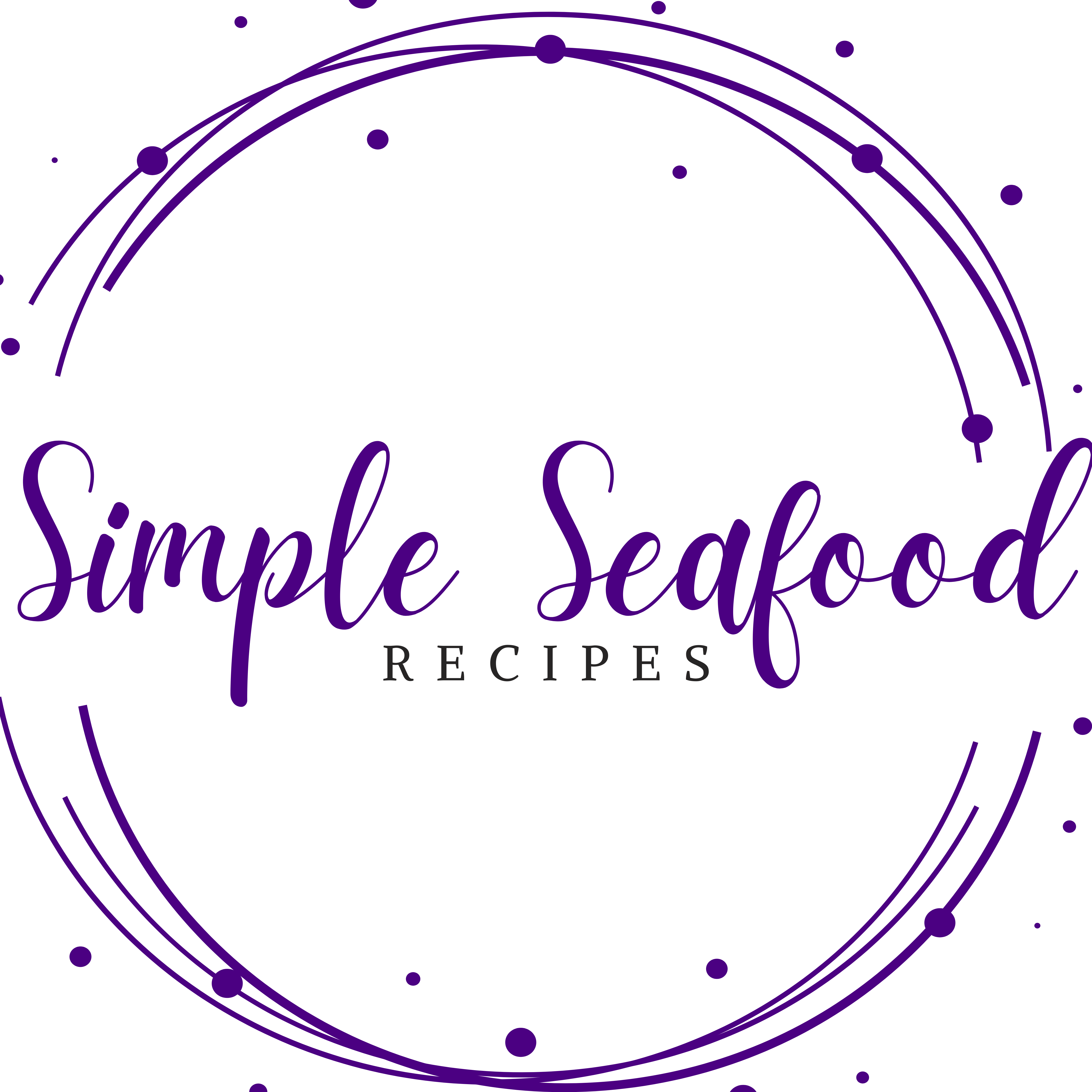
KfnqDuxw
Wednesday 14th of May 2025
1
Dannii
Tuesday 30th of January 2024
This was the perfect way to cook salmon. I will never cook salmon another way again.
Brandi Crawford
Tuesday 30th of January 2024
Love to hear it!
suja MD
Monday 29th of January 2024
yummy and great in taste. Thank You
Shashi
Monday 29th of January 2024
I made this last night and it was such a hit - also such easy cleanup!
Brandi Crawford
Tuesday 30th of January 2024
The clean up is the best part!
Carrie
Monday 29th of January 2024
Such a great way to cook salmon! I love how you seasoned these. :)
Brandi Crawford
Tuesday 30th of January 2024
Thank you! My favorite combo.